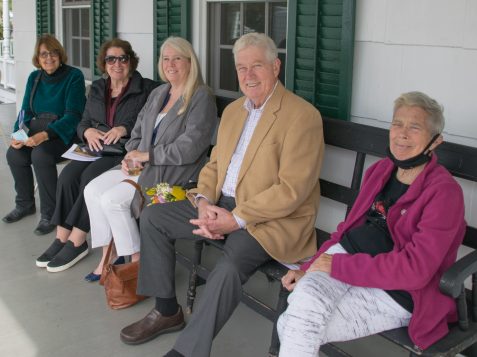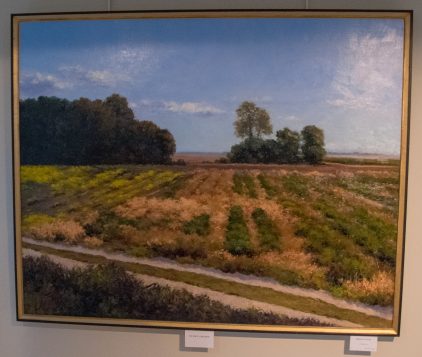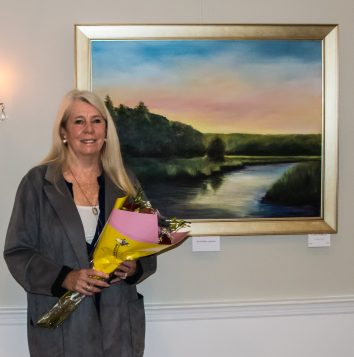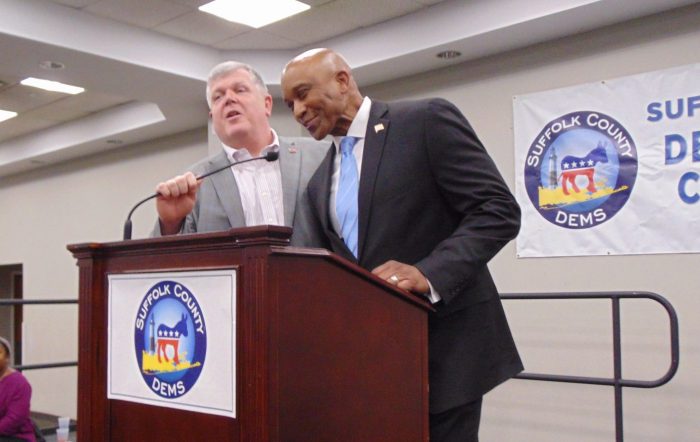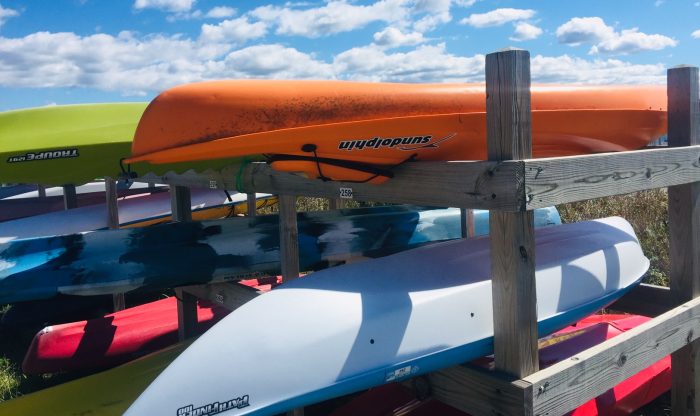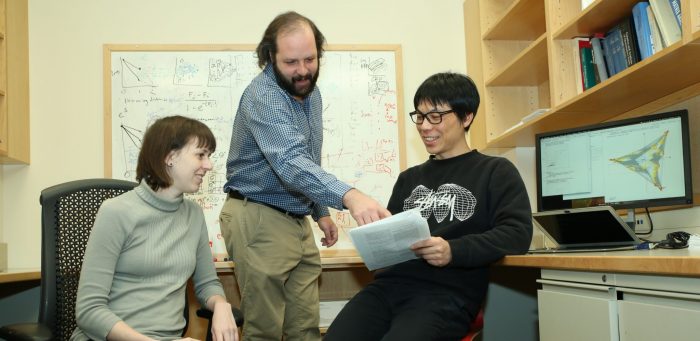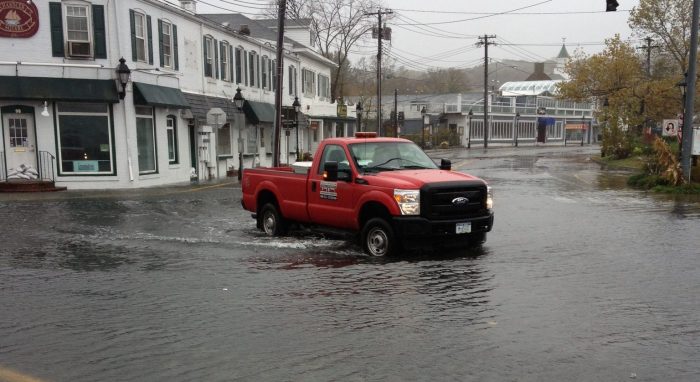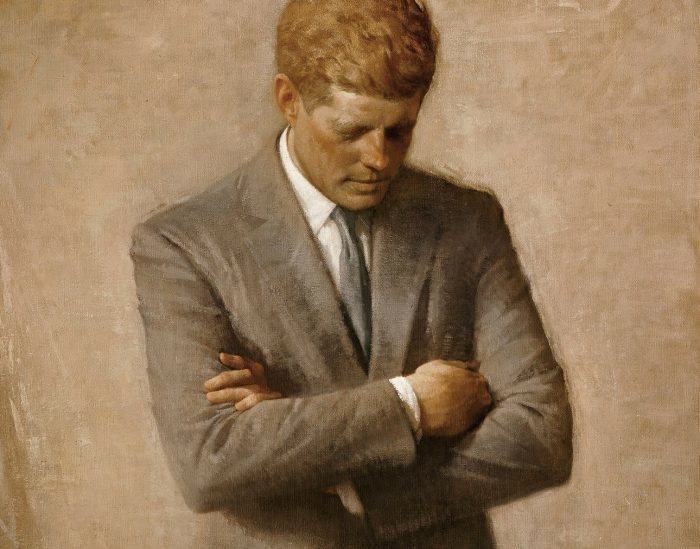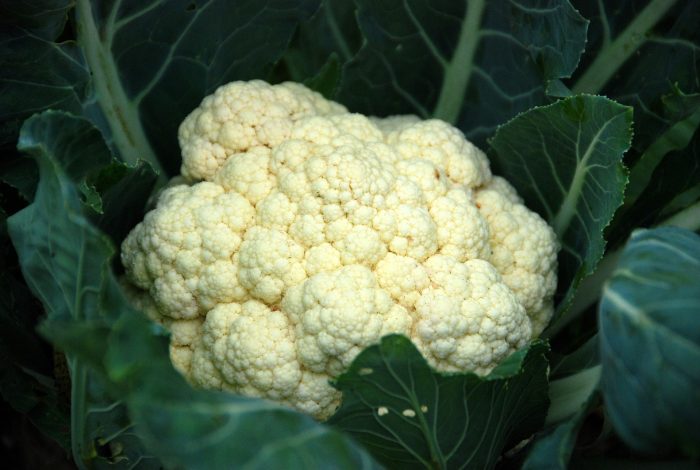By Cayla Rosenhagen

In the words of Patty Yantz, the Setauket Artists “are a group of people who see the beauty in the Long Island area and celebrate it through their artwork.” At their 41st annual art exhibition at the Neighborhood House in Setauket, they encourage the public to come celebrate with them.
I visited the show on Oct. 24, the grand opening of the exhibit. From the moment I walked through the door, I was captivated by the beauty of the artwork that filled every room. Members of the Setauket Artists gathered around to take in each other’s masterpieces and mingle with their fellow painters. The art that adorned the house ranged from landscapes to still lifes to portraits and each one displayed the artists’ mastery of color, form, and line.
I was instantly immersed in the joyful, artsy energy that emanated from both paintings and painters. It was inspirational to witness the sheer artistic talent of our community, and to meet some of the local artists themselves.
To kick off the grand opening of the show, the guests were ushered into the Neighborhood House’s ballroom where administrators of the organization made a speech in gratitude to long-time benefactor Fred Bryant of Bryant Funeral Homes, and their president and curator, Irene Ruddock. They also praised Patty Yantz, the honored artist of the show.
A high school art teacher for 34 years, Patty Yantz has belonged to the Setauket Artists group for about 16 years. She was selected as the honored artist for the exhibit because of her “brave contribution (of artwork) to the show.” Some of her works in the exhibit include “Sundown Serenity” and “Mystical Meadow,” both landscape paintings which utilize vibrant colors and leading lines that draw the observer right into the picturesque settings.
Later that day, I spoke with Robert Roehrig, vice president of the Setauket Artists, whose work is also featured at the exhibit. His life-like oil paintings on display depict the historic charm and natural splendor of the nearby Frank Melville Memorial Park in winter. He started painting with oils 15 years ago and his paintings are inspired by “the beauty of nature, interesting buildings, and light and shadow.”
The Setauket Artists was founded by Flo Kemp four decades ago as a community for artists in the Setauket area. Since then, it has grown to include members from all over Suffolk County. The group hosts annual spring and autumn art shows.
Their autumn exhibition will be open to the public until Nov. 14 and is welcoming guests from 10 a.m. to 5 p.m. daily. As it is a fundraising event, the artwork displayed is available for purchase and a percentage of the proceeds will go toward the Setauket Neighborhood House. If you plan to visit, please be respectful of COVID-19 guidelines and wear a mask inside the house.
Cayla Rosenhagen is a local high school student who enjoys capturing the unique charm of the community through photography and journalism. She serves on the board of directors for the Four Harbors Audubon Society and Brookhaven’s Youth Board, and is the founder and coordinator of Beach Bucket Brigade, a community outreach program dedicated to environmental awareness, engagement, and education. She is also an avid birder, hiker, and artist who is concurrently enrolled in college, pursuing a degree in teaching.




